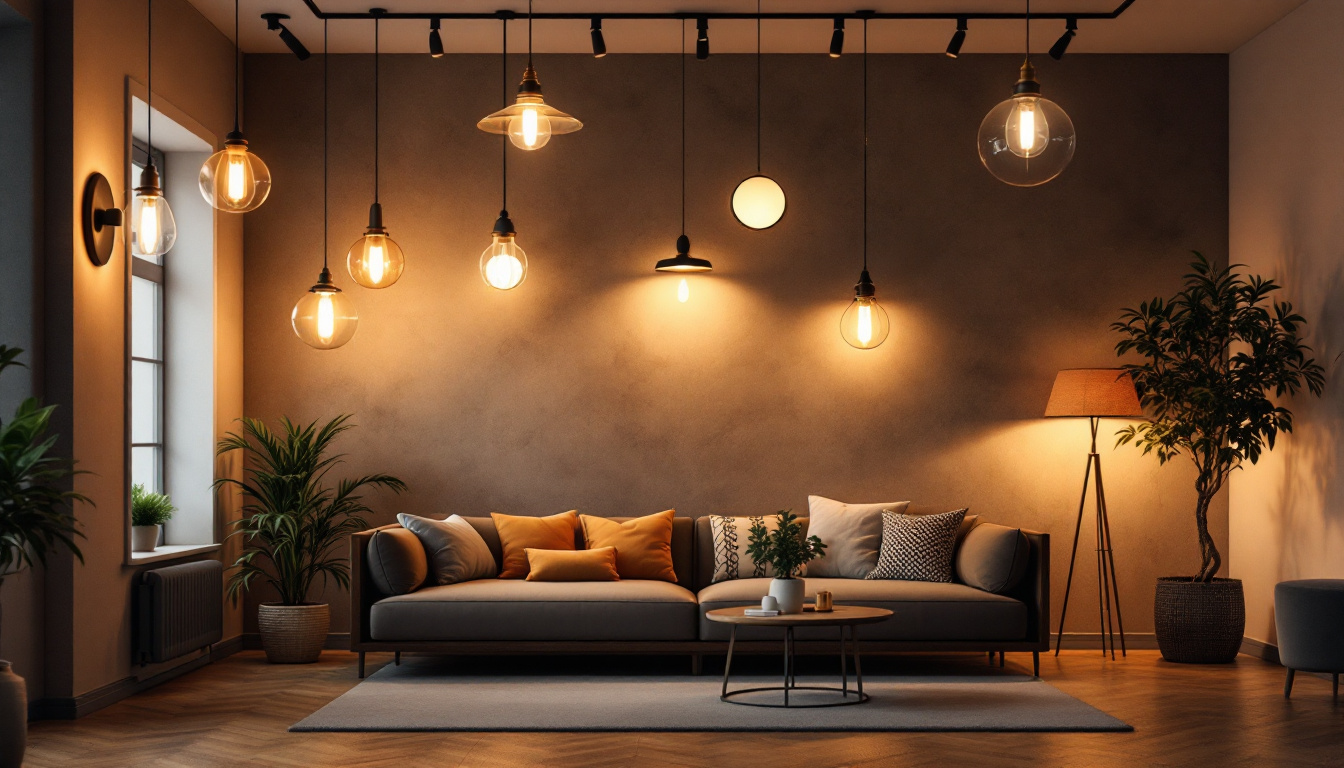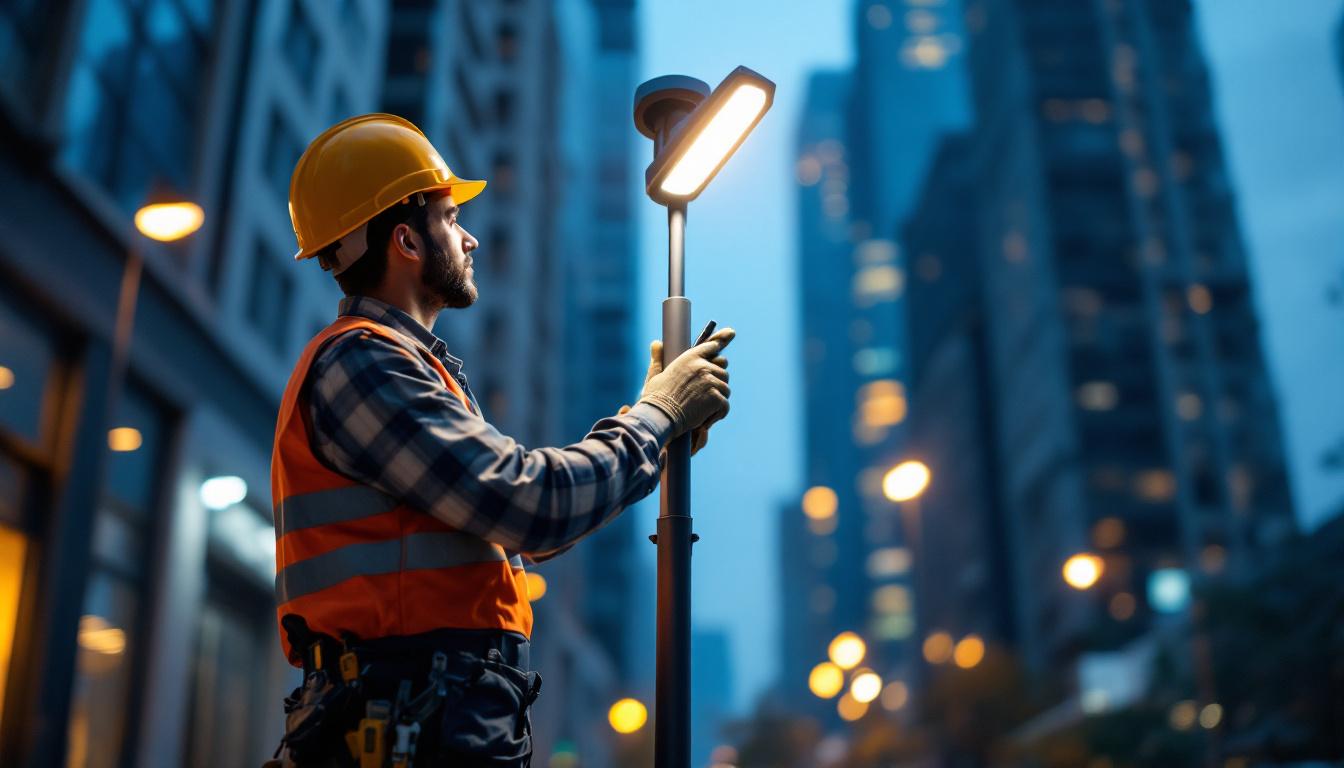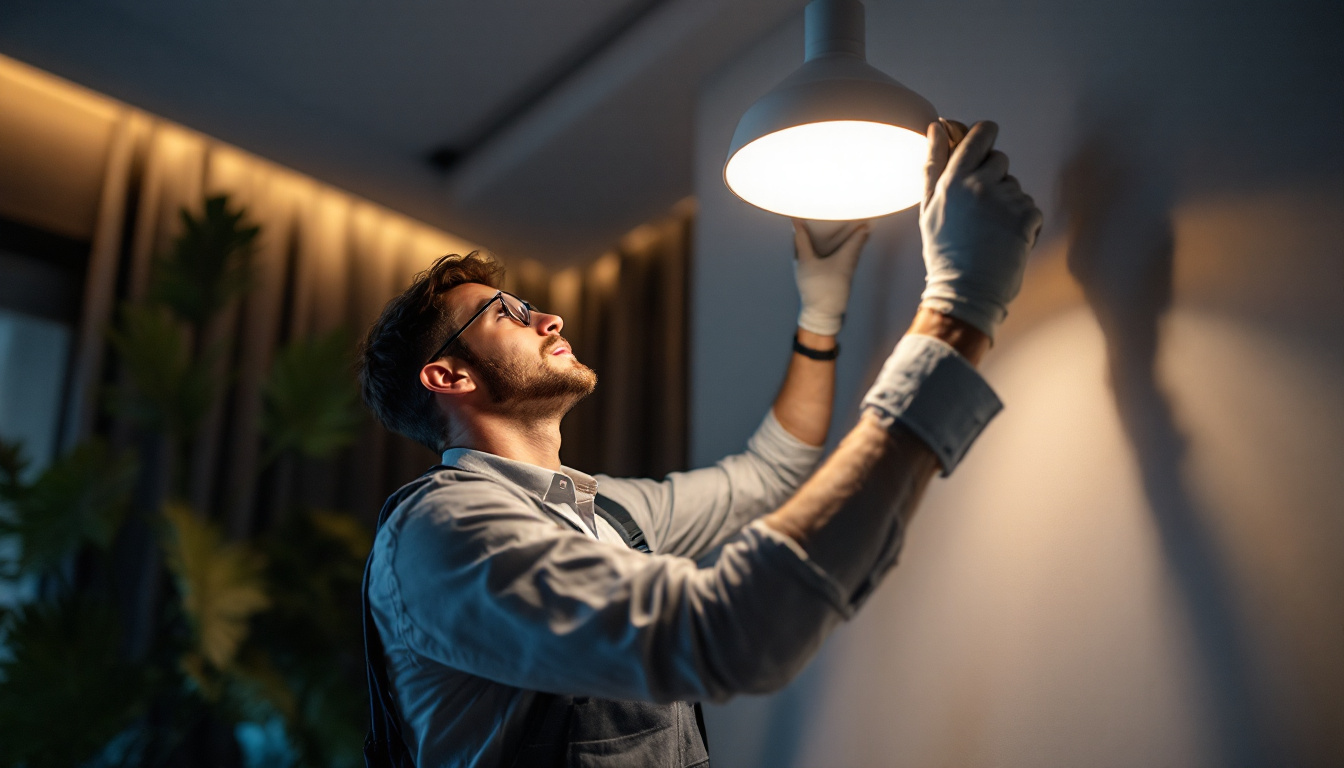
Lighting plays a crucial role in the functionality and aesthetic appeal of any space. For lighting contractors, understanding the various types of lighting fixtures is essential for providing clients with the best solutions tailored to their needs. This article explores the different kinds of lighting fixtures, their applications, and considerations for installation, ensuring that contractors are well-equipped to make informed decisions.
Lighting fixtures come in various shapes, sizes, and designs, each serving a unique purpose in residential, commercial, and industrial settings. The primary categories of lighting include ambient, task, and accent lighting, each contributing to the overall illumination and atmosphere of a space.
Ambient lighting provides general illumination, making it possible to navigate a room comfortably. Task lighting, on the other hand, focuses on specific areas where activities such as reading or cooking take place. Accent lighting is used to highlight particular features or artworks, adding depth and interest to the overall design.
There are several types of lighting fixtures that contractors should be familiar with. These include ceiling-mounted fixtures, wall sconces, pendant lights, and floor lamps, among others. Each type has its advantages and ideal applications, making it essential for contractors to understand their characteristics.
Ceiling-mounted fixtures are among the most common types of lighting used in homes and businesses. They include flush mounts and semi-flush mounts, both of which are designed to be mounted directly to the ceiling. Flush mounts sit closely against the ceiling, making them ideal for low-ceiling spaces, while semi-flush mounts hang slightly lower, providing a more decorative option.
These fixtures are versatile and can be used in various settings, from kitchens to hallways. Their design often allows for the integration of energy-efficient bulbs, contributing to sustainability efforts. Furthermore, many modern ceiling-mounted fixtures incorporate smart technology, enabling users to control brightness and color temperature through mobile apps or voice commands, enhancing both convenience and energy efficiency.
Wall sconces are another popular choice for both functional and decorative lighting. These fixtures are attached to walls and can serve multiple purposes, including providing ambient light or illuminating specific areas. They come in various styles, from modern to traditional, allowing contractors to offer clients a range of aesthetic options.
In addition to their decorative appeal, wall sconces can also enhance safety in stairways and hallways by providing additional light where needed. They can be strategically placed to create a warm, inviting atmosphere in living spaces or to guide guests through a home. Some wall sconces even feature adjustable arms or shades, allowing for customizable lighting angles that can adapt to different activities or moods, making them a practical choice for versatile living environments.
Task lighting is designed to illuminate specific areas where activities are performed. This type of lighting is essential in spaces such as kitchens, offices, and workshops, where clarity and focus are necessary for completing tasks efficiently. By providing targeted illumination, task lighting helps reduce eye strain and enhances productivity, making it a vital component in both residential and commercial environments.
When selecting task lighting fixtures, contractors should consider the type of activities that will take place in the area. Proper placement and brightness levels are crucial for ensuring that the lighting serves its intended purpose without causing glare or shadows. Additionally, the use of dimmable fixtures can offer flexibility, allowing users to adjust the light intensity based on the time of day or specific tasks at hand, further enhancing the functionality of the space.
Desk lamps are a staple in offices and study areas, providing focused light for reading, writing, or working on a computer. These fixtures often come with adjustable arms or heads, allowing users to direct light precisely where it is needed. Many modern desk lamps also incorporate features such as USB charging ports or integrated wireless charging pads, merging convenience with functionality and making them even more appealing for today’s tech-savvy users.
Work lights, on the other hand, are typically used in industrial or construction settings. They provide bright, portable lighting that can be moved as needed, ensuring that workers have adequate illumination for their tasks. Some work lights are designed to be rugged and weather-resistant, making them suitable for outdoor use or in challenging environments. With advancements in LED technology, these lights are also becoming more energy-efficient, providing high lumen output with lower energy consumption, which is a significant consideration for contractors and businesses looking to reduce operational costs.
Under-cabinet lighting is a popular choice in kitchens, providing direct light to countertops for food preparation. These fixtures can be installed beneath cabinets, illuminating the workspace without taking up additional room. Options include LED strips and puck lights, both of which offer energy-efficient solutions. The versatility of under-cabinet lighting allows for creative configurations, such as layering different types of fixtures to achieve a balanced and functional lighting scheme.
Contractors should consider the color temperature of the bulbs used in under-cabinet lighting, as this can significantly impact the overall ambiance of the kitchen. Warmer tones create a cozy atmosphere, while cooler tones can enhance visibility. Furthermore, the choice of dimmable options can allow homeowners to switch between bright task lighting during meal prep and softer lighting for entertaining guests, thereby enhancing the kitchen’s usability for various occasions. Additionally, incorporating motion sensors can provide convenience and energy savings, automatically turning the lights on and off as needed, which is particularly beneficial in busy kitchen environments.
Accent lighting is used to highlight specific features within a space, such as artwork, architectural details, or plants. This type of lighting adds depth and character, transforming a room from ordinary to extraordinary.
For contractors, understanding the principles of accent lighting is essential for creating visually appealing environments. Proper placement and intensity are key factors in achieving the desired effect without overwhelming the space.
Track lighting consists of a series of adjustable fixtures mounted on a track, allowing for flexibility in directing light. This type of lighting is ideal for galleries, retail spaces, and homes where highlighting specific areas is desired. Contractors can recommend track lighting systems that allow for easy reconfiguration as design needs change.
Track lighting can accommodate various bulb types, including LEDs, making it a versatile and energy-efficient option.
Recessed lighting, also known as can lighting, is installed into the ceiling, providing a clean and modern look. This type of lighting is excellent for accentuating architectural features or artwork without taking up visual space. It is commonly used in living rooms, hallways, and kitchens.
When installing recessed lighting, contractors should consider the spacing and placement to ensure even illumination and avoid creating dark spots. The choice of trim and bulb type can also significantly affect the overall aesthetic.
Outdoor lighting is essential for enhancing safety, security, and aesthetics in exterior spaces. Whether illuminating pathways, patios, or gardens, the right outdoor fixtures can create inviting environments that extend the usability of outdoor areas.
Contractors must consider factors such as weather resistance, energy efficiency, and design when selecting outdoor lighting fixtures. The right choices can enhance curb appeal while ensuring functionality.
Pathway lights are designed to illuminate walkways, ensuring safe navigation after dark. These fixtures come in various styles, from solar-powered options to low-voltage systems, making them suitable for different budgets and design preferences.
Landscape lighting, on the other hand, is used to highlight trees, shrubs, and architectural features in the yard. Well-placed landscape lights can create dramatic effects, enhancing the beauty of outdoor spaces while providing safety and security.
Security lighting is a crucial consideration for both residential and commercial properties. These fixtures are designed to deter intruders and provide visibility in dark areas. Motion sensor lights are particularly effective, as they activate when movement is detected, conserving energy while enhancing security.
When recommending security lighting solutions, contractors should consider the layout of the property and identify areas that require additional illumination for safety and security purposes.
In today’s environmentally conscious world, energy efficiency is a significant consideration for lighting contractors. The shift towards sustainable lighting solutions has led to the increased popularity of LED fixtures, which offer numerous benefits over traditional incandescent and fluorescent options.
LED lights consume significantly less energy, have a longer lifespan, and produce less heat, making them a smart choice for both residential and commercial applications. Contractors should stay informed about the latest energy-efficient technologies and products to provide clients with the best options available.
When discussing energy efficiency, it’s essential to understand the difference between lumens and watts. Lumens measure the amount of light emitted by a bulb, while watts indicate energy consumption. As technology advances, it’s possible to achieve higher lumens with lower wattage, making it easier to provide bright, efficient lighting solutions.
Contractors should educate clients about the importance of lumens in selecting the right lighting for their spaces, ensuring they achieve the desired brightness without excessive energy consumption.
Smart lighting technology has gained popularity in recent years, allowing homeowners and businesses to control their lighting remotely via smartphones or voice commands. These systems can enhance energy efficiency by enabling users to schedule lighting and adjust brightness levels based on their needs.
Contractors should be familiar with the various smart lighting options available, including smart bulbs, switches, and integrated systems. Offering clients the latest in smart technology can enhance their overall experience and satisfaction.
For lighting contractors, understanding the various types of lighting fixtures and their applications is crucial for delivering exceptional service. From ambient to task and accent lighting, each type serves a unique purpose that contributes to the overall functionality and aesthetics of a space.
As the industry evolves, staying informed about energy-efficient solutions and smart technology will empower contractors to provide clients with innovative and sustainable lighting options. By mastering the intricacies of lighting design, contractors can elevate their services, ensuring that every project shines brightly.
Ready to take your lighting projects to the next level? At LumenWholesale, we provide lighting contractors with an exceptional range of high-quality, spec-grade lighting fixtures at unbeatable wholesale prices. Say goodbye to local distributor markups and hello to our extensive selection that meets rigorous industry standards. With free shipping on bulk orders, you can trust that you’re getting premium lighting solutions at the best value, without any hidden fees. Elevate your service offerings with the perfect blend of quality, affordability, and convenience. Discover how LumenWholesale can brighten your business by visiting our collection at Wholesale Lighting at the Best Value.

Discover the essential steps to installing a fluorescent light bulb efficiently and safely, and learn how mastering this skill can boost your chances of securing more lighting contracts.

Discover how investing in 2 light poles can enhance efficiency and profitability for lighting contractors.

Discover the essential do’s and don’ts for lighting contractors when working with upward lighting lamps.

Discover innovative cost-saving strategies for lighting contractors with the CFL Bulb 13W.